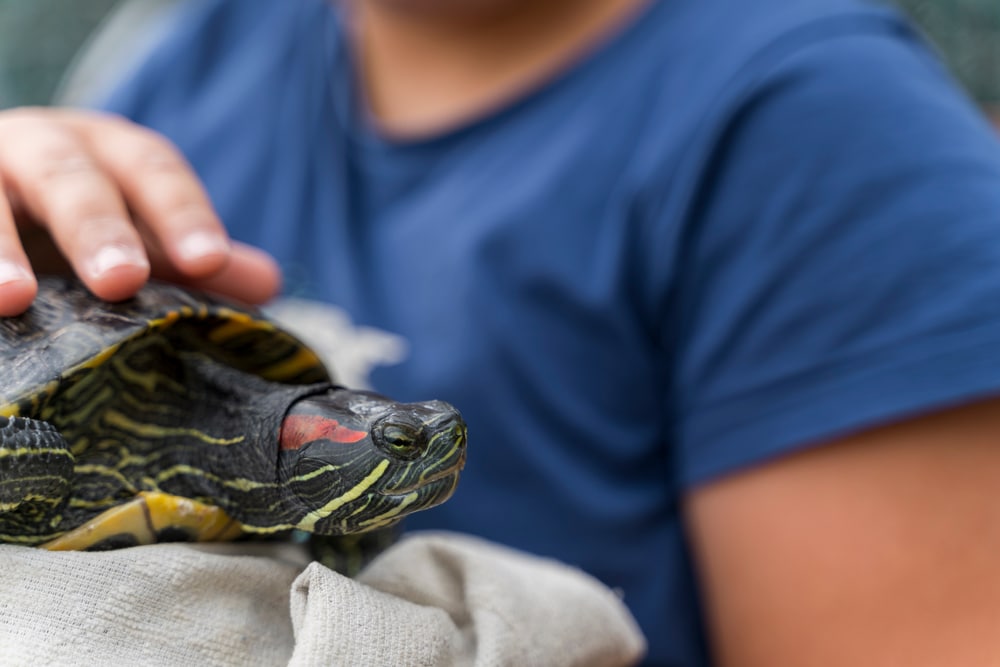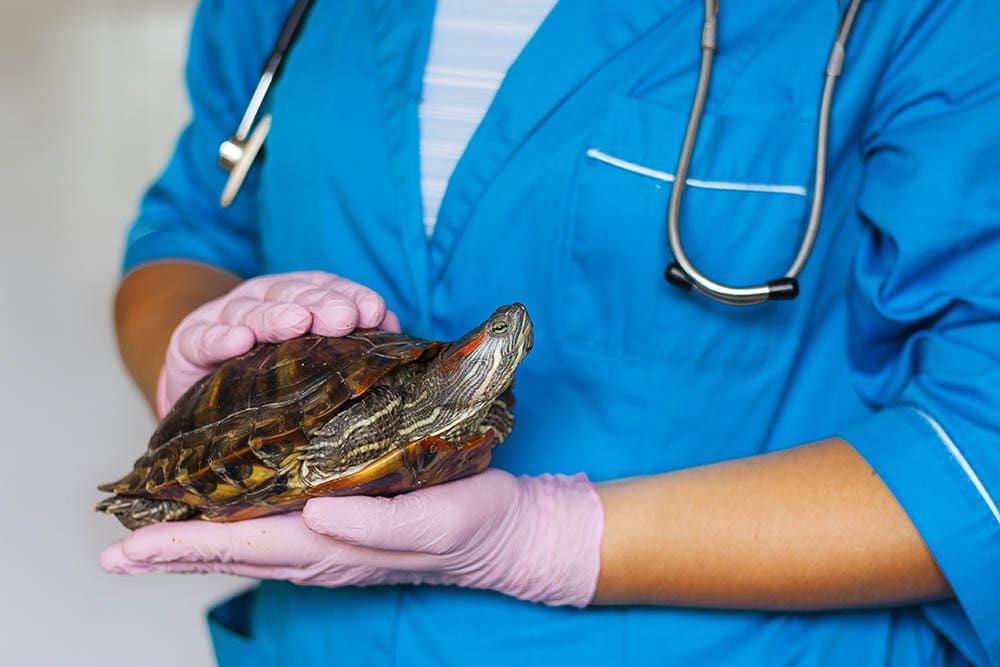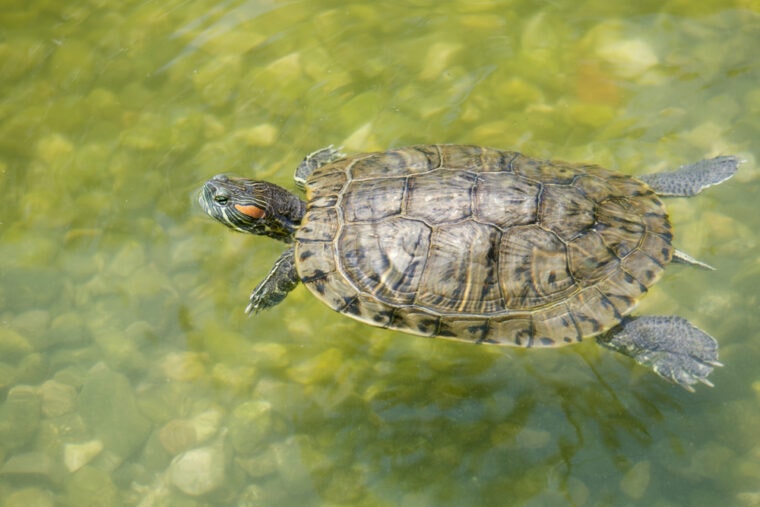
Click to Skip Ahead
As turtles become more common as pets around the world, many new (and experienced) turtle owners have questions about the fascinating reptiles. One of the most common is whether turtles can swim. Yes, most pet turtles can and do swim, though swimming ability varies by species.
If you’re looking for facts and information about turtles to become a better pet parent and keep them safe while in your care, the information below is just for you! Turtles might be slow, but the following article is a fast read that will provide useful answers to all your turtle swimming questions!
Can All Turtles Swim?
Most turtles can swim; however, their ability to swim varies considerably by species.
Aquatic Turtles
Aquatic turtles, such as the red-eared slider (Trachemys scripta elegans) and the painted turtle (Chrysemys picta), are very adept swimmers and benefit from having an enclosure that is at least two-thirds water with a depth of at least 12 inches (30 centimeters). These turtles owe their swimming ability to their shell conformation and webbed feet, which let them propel themselves through the water seemingly effortlessly. They also often eat in the water itself.

Land Turtles
Land turtles, though, such as the North American box turtles (in the genus Terrapene), are usually found in marshes, grasslands, and forests and are considered poor swimmers. They often retreat further into the forest when they are about to brumate. This genus includes the popular Eastern box turtle (Terrapene carolina carolina) and the Florida box turtle (Terrapene carolina bauri). Their dome-like shell allows them the ability to retract entirely in their shells for protection. However, it also renders them poor swimmers.

Tortoises
Tortoises are exclusive land dwellers and very poor swimmers. They should never be submerged in water, as they don’t have the physiological adaptation to swim efficiently. They often occupy geographical niches where bodies of water are very rare (such as deserts and plains).

How Do Aquatic Turtles Swim?
Turtles are able to swim well due to one key feature: webbed feet. The webbing, like swim fins used by divers, helps turtles move around when in and under the water.
When turtles swim, they use all four legs. While swimming, aquatic turtles extend their legs for better propulsion.
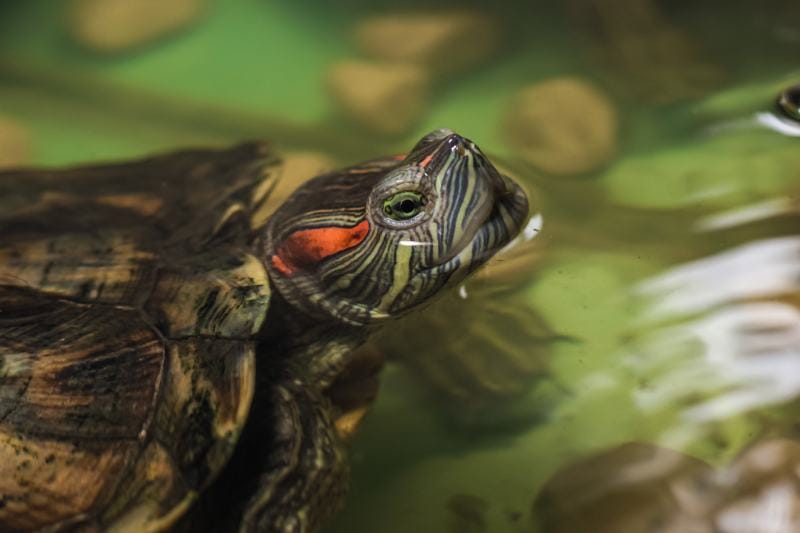
Can Baby Turtles Swim?
When they hatch, baby turtles can do everything they need to survive, including swimming. Baby sea turtles, for example, will crawl from their nest in the sand and go directly into the ocean. There they will immediately begin swimming around like pros and looking for food (if they make it that far without getting eaten by a predator).
All species of turtles are precocial, which means that they are independent at birth and don’t need the guidance of adults to care for them, feed them, or teach them the skills they need for survival. This allows them to swim at birth.
 What Can Cause a Turtle to Have Problems Swimming?
What Can Cause a Turtle to Have Problems Swimming?
If you have a pet aquatic turtle that’s struggling to swim, it’s usually a sign that something isn’t right, whether with your turtle or their environment. Let’s take a look at a few of the reasons your turtle might have trouble swimming.
1. Water Level Issues
Some species are equipped to dive into deeper water to hunt for food, while others stick to more shallow water. If you have a shallow-swimming turtle in a deep water enclosure or a deep-diving turtle in a shallow tank, either situation can cause stress for your turtle.
2. Illnesses
An illness can cause your turtle to have problems swimming, especially injuries to the limbs. This includes weakness associated with disorders such as metabolic bone disease. Female turtles in particular are vulnerable if they have excess eggs in their body or issues with laying, as the weight of the eggs can interfere with their normal swimming ability and buoyancy. It is therefore important to keep an eye on your female pets, especially if they are old enough to lay eggs.
Take note that a female can form and lay eggs even in the absence of a male, so the absence of a male pet turtle does not eliminate this risk.
3. Water Temperature Issues
Most turtles can handle a range of temperatures, but if the water in their enclosure is too hot or too cold, it can cause swimming issues for your pet. For example, if the water is too hot, your turtle may not go into the water, and if it’s too cold, they may be listless and stiff when trying to swim or spend their time frantically trying to find water that’s the correct temperature.
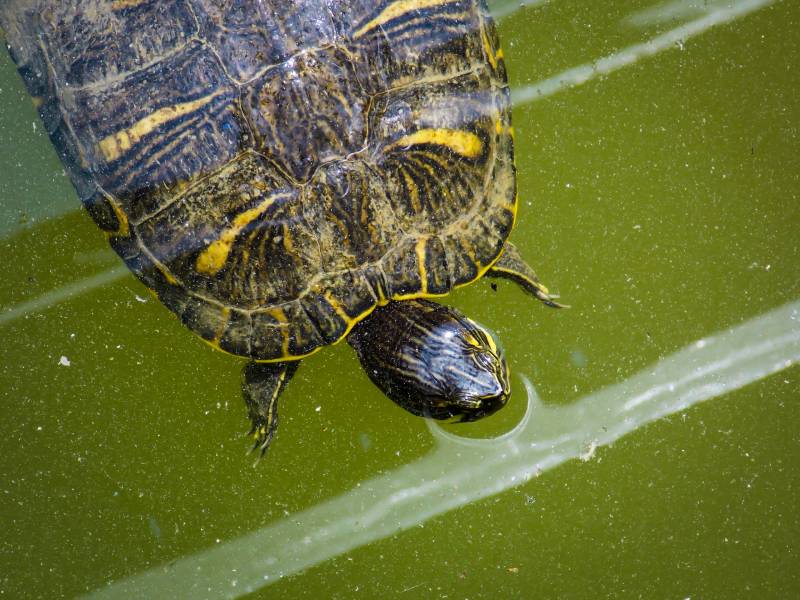
Can a Turtle Drown?
Turtles can drown, but it doesn’t happen frequently. Like us, turtles have lungs to breathe air and take in oxygen. Turtles, however, have fantastic abilities to regulate their breathing when underwater and can often swim without having to surface for 40 minutes to several hours, depending on their species.
The most common reason a pet turtle would drown is if a female turtle is struggling to surface due to the burden of eggs that she cannot lay and the condition goes unnoticed.
Pet turtles may also drown if they get stuck in between a tank ornament or if they’re housed in a tank that’s too deep for their species with a current too strong to allow for easy resurfacing to breathe.
Other reasons may include trying to get a land turtle or tortoise to swim by submerging them in water. Their poor swimming ability may lead to a drowning incident if they cannot find their way out of the water quickly.
 How to Ensure Your Turtle Stays Safe When Swimming
How to Ensure Your Turtle Stays Safe When Swimming
If you have a pet turtle and want to ensure they stay safe while in the enclosure, the following tips and advice will come in handy.
Use an Adequate Water Filtration System
Keeping the water in your turtle’s tank clean is one of your most important tasks as a turtle owner. A quality filter that uses activated charcoal is essential. It’s also recommended to change the water in their tank frequently. This doesn’t impact their physical swimming ability directly but does keep them safe from illnesses.
Provide Appropriate Water Levels
Some turtles dive deep, while others stick closer to the surface and prefer shallow water. If you’re unsure which situation fits your turtle species, ask your veterinarian for advice. The correct water level can make all the difference for your pet turtle.
Provide a Space to Get Out of the Water
Even though they swim like champions, all aquatic pet turtles need to get out of the water occasionally and relax, bask, and recharge their body’s batteries. Providing that space is critical to your turtle’s health and welfare. Veterinarians recommend that two-thirds of your aquatic turtle’s enclosure or tank is water while the other one-third is a dry platform where they can get out of the water and bask under a UV lamp.
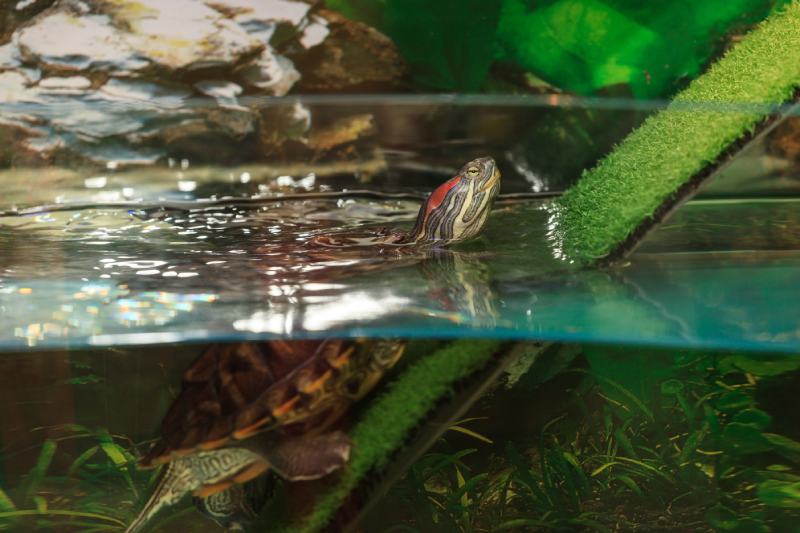
Be Sure to Keep Your Turtle’s Enclosure Safe
Many owners put plants, driftwood, and other items in their turtle’s tanks to give them something to eat and swim around. It’s critical that all of these items not be too large so that your turtle won’t get trapped underwater and drown.
Don’t Clean Your Turtle’s Tank With Detergents or Soap
Cleaning your turtle’s tank should be done on a regular basis, but you should never use soaps or detergents haphazardly since they can harm your pet. Instead, it is best to use a recommended turtle tank cleaner from your local pet store.
Final Thoughts
Aquatic pet turtles are born swimmers and can hit the water immediately after hatching. On the other hand, land turtles (such as box turtles) and tortoises are poor swimmers.
Although turtles can drown, it’s a relatively rare occurrence and something that can be easily avoided with proper husbandry and keen observation of your pet.
We hope the information in this article helps you care for your pet turtle and allows them to live a long, healthy life.
Featured Image Credit: Chris Mann, Shutterstock


